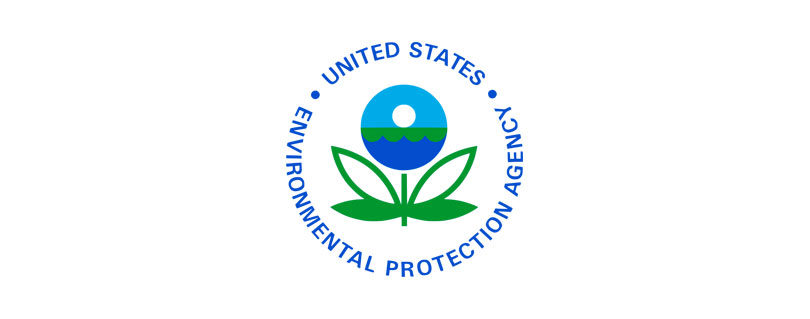EPA Announces More Than $86 Million for Minnesota Lead Pipe Replacement to Advance Safe Drinking Water as Part of the Biden-Harris Administration Investing in America Agenda
Publilshed by the U.S. Environmental Protection Agency (EPA)
Today, the U.S. Environmental Protection Agency announced $86,566,000 from President Biden’s Investing in America agenda to help Minnesota identify and replace lead service lines, preventing exposure to lead in drinking water. Lead can cause a range of serious health impacts, including irreversible harm to brain development in children. To protect children and families, President Biden has committed to replacing every lead pipe in the country. Today’s announcement, funded by the Bipartisan Infrastructure Law and available through EPA’s successful Drinking Water State Revolving Fund (DWSRF), takes another major step to advance this work and the Administration’s commitment to environmental justice. This funding builds on the Administration’s Lead Pipe and Paint Action Plan and EPA’s Get the Lead Out Initiative.
Working collaboratively, EPA and the State Revolving Funds are advancing the President’s Justice40 Initiative to ensure that 40% of overall benefits from certain federal investments flow to disadvantaged communities that are marginalized by underinvestment and overburdened by pollution. Lead exposure disproportionately affects communities of color and low-income families. The total funding announced through this program to date is expected to replace up to 1.7 million lead pipes nationwide, securing clean drinking water for countless families.
“The science is clear, there is no safe level of lead exposure, and the primary source of harmful exposure in drinking water is through lead pipes,” said EPA Administrator Michael S. Regan. “President Biden understands it is critical to identify and remove lead pipes as quickly as possible, and he has secured significant resources for states and territories to accelerate the permanent removal of dangerous lead pipes once and for all.”
“Minnesotans know the value of clean water—in fact, we were the first state to put statewide water quality standards in place over 50 years ago,” said Sen. Tina Smith. “This is an investment in the health and safety of Minnesota families, including families living in communities historically left out of infrastructure upgrades. I was proud to support the President’s legislation to deliver clean drinking water to our communities.”
“Fantastic to hear that Minnesota will receive more than $86.5 million in federal funding from the Bipartisan Infrastructure Law to identify and replace lead service lines,” said Rep. Betty McCollum. “We are continuing to invest in reducing and preventing lead exposure to protect the health of children and families across our state. Today’s announcement is a major step in updating our water infrastructure to help ensure every Minnesotan has safe water to drink.”
“All Minnesotans should have access to safe, clean drinking water. Right now there are more than 100,000 lead water service lines around our state leaching lead into drinking water and threatening our health,” said Minnesota Department of Health Commissioner Brooke Cunningham. “We are tremendously grateful to the Environmental Protection Agency for their support and funding to tackle this critical issue. Last year I was proud to work with Governor Walz to secure an investment of more than $240 million at the state level to ensure that these needed replacements did not come at a burdensome cost to homeowners, and today’s announcement from the EPA ensures that even more Minnesotans will not have to choose between costly repairs to aging infrastructure and safe drinking water for their families.”
President Biden’s Bipartisan Infrastructure Law invests a historic $15 billion to identify and replace lead service lines. The law mandates that 49% of funds provided through the DWSRF General Supplemental Funding and DWSRF Lead Service Line Replacement Funding must be provided as grants and forgivable loans to disadvantaged communities, a crucial investment for communities that have been underinvested in for too long. EPA projects a national total of 9 million lead services lines across the country, based on data collected from the updated 7th Drinking Water Infrastructure Needs Survey and Assessment. The funding announced today will be provided specifically for lead service line identification and replacement and will help every state and territory fund projects to remove lead pipes and reduce exposure to lead from drinking water.
The Lead Service Line-specific formula used to allot these funds allows states to receive financial assistance commensurate with their need as soon as possible, furthering public health protection nationwide. The formula and allotments are based on need — meaning that states with more projected lead service lines receive proportionally more funding.
Alongside the funding announced today, EPA is also releasing a new memorandum that clarifies how states can use this and other funding to most effectively reduce exposure to lead in drinking water. Additionally, EPA has developed new outreach documents to help water systems educate their customers on drinking water issues, health impacts of lead exposure, service line ownership, and how customers can support the identification of potential lead service lines in their homes.
To view more stories about how the unpreceded investments from the Bipartisan Infrastructure Law are transforming communities across the country, visit EPA’s Investing in America’s Water Infrastructure Story Map. To read more about some additional projects that are underway, see EPA’s recently released Quarterly Report on Bipartisan Infrastructure Law Funded Clean Water and Drinking Water SRF projects and explore the State Revolving Funds Public Portal.
Today’s allotments are based on EPA’s updated 7th Drinking Water Infrastructure Needs Survey and Assessment (DWINSA) including an assessment of newly submitted information. To date, this is the best available data collected and assessed on service line materials in the United States. Later this summer, EPA will release an addendum to the 7th DWINSA Report to Congress which will include the updated lead service line projections. EPA anticipates initiating data collection, which will include information on lead service lines, for the 8th DWINSA in 2025.
For more information, including state-by-state allotment of 2024 funding, and a breakdown of EPA’s lead Drinking Water State Revolving Fund, please visit EPA’s Drinking Water website.
Read the full article at: https://www.epa.gov/newsreleases/epa-announces-more-86-million-minnesota-lead-pipe-replacement-advance-safe-drinking



